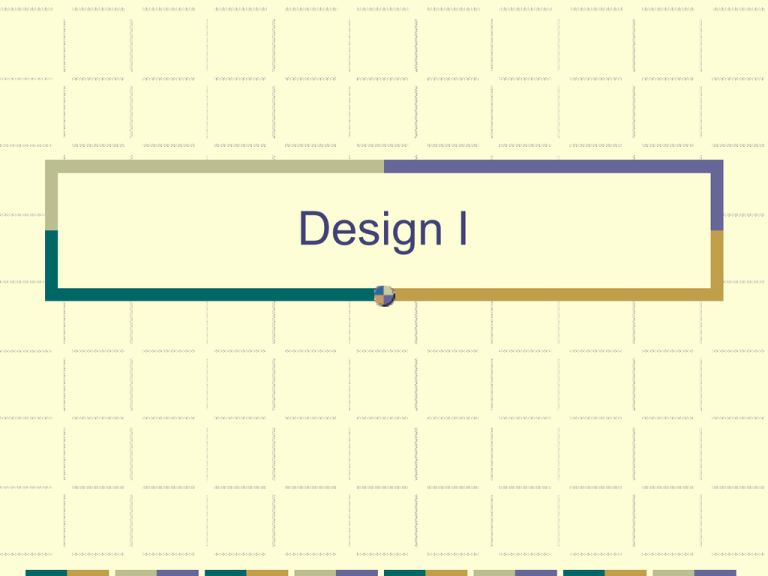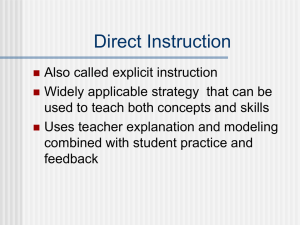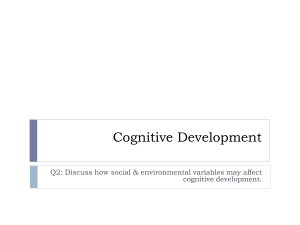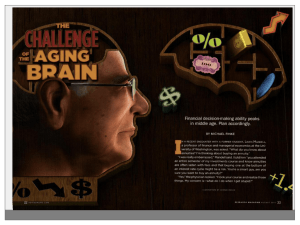Design I
advertisement

Design I Elements to consider Cognitive load Sequencing Cognitive Load 7±2 Want to reduce cognitive load spent on extraneous details. Two types of cognitive load Cognitive Load Intrinsic cognitive load is determined by the interactivity of the content. We have no control over this interactivity (some topics are just complex). Need to be aware of it. Extraneous cognitive load is introduced in the design or layout of the materials. Control by careful use of instructional design and message design. Certainly do not want to introduce or increase this. Controlling Cognitive Load Goal-free effect – do not force goals for the learners when they don’t add to the understanding. Also learner to develop a problem-solving strategy. Worked-example effect – present individual steps rather than the entire thing. Split-attention effect – integrate text and graphics Redundancy – do not include as it may actually increase cognitive load. Posner & Strike Sequencing Scheme Learning-related sequencing o o o o o Prerequisites first Known/familiar before unknown Easier tasks-then more difficult High interest before low interest Based upon a development theory (e.g., Piaget) Posner & Strike Sequencing Scheme World-related sequencing o o o o Sequence based on the organization in which the concepts are found in the world. Spatial (physical layout of a car) Temporal (time line) Physical phenomenon (similar items are presented together) Posner & Strike Sequencing Scheme Concept-related sequence o o o o Class relations (groups of things or events that are similar) Propositional relations (teach the relation between propositions before teaching the proposition) Concept sophistication (concrete to abstract; simple to complex) Logical prerequisite (teach concepts necessary to understand another concept being taught). Strategies Elaboration Theory Content expertise sequencing (superordinate, coordinate, subordinate relationships). Start with readily observable and then move to more detailed and complex aspects. Tax expertise – uses simplifying conditions method. Start with simplest task and proceed to more complex. Heuristics Make it concrete A mix of concrete and abstract is best. Make text concrete by using pictures, concrete words, and examples to illustrate ideas. Step size o o Use consistent terminology throughout the instruction Make explicit references back to what the learner has already learned. Heuristics Use appropriate pacing o o Pacing is a function of the number of examples, problems, interactions, or exercises presented with an idea. Increasing the distance between ideas slows pacing. Maintain consistency o Create a style guide before you start writing. Cues Identify cues in the instruction to help with the learning. Strategies Preinstructional strategy Initial presentation Generative strategies Recall (use repetition, rehearsal, review, mnemonics) Integration (have students paraphrase to transform new content) Organizational (have learners analyze new ideas by outlining, categorizing, etc. Elaboration – (have learners add their own ideas). Strategies Transitions (showing relationships) Group presentations Small-group formats Self-paced learning Teaching Procedural Tasks Understand the procedure (do your analysis) Complete “Concepts for Design” What are the variable characteristics and what equivalence classes could they point to? Routine tactics Generality Example Practice Sequence does not be G-E-P Always provide for informative feedback!!!!! How are these things built into an independent study?











